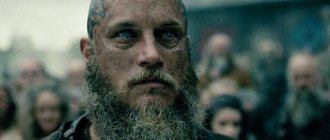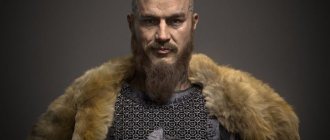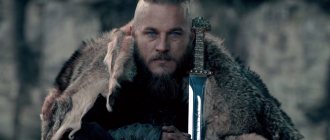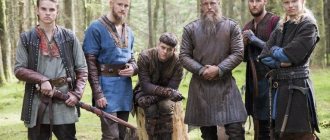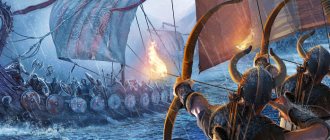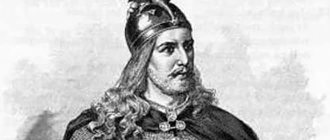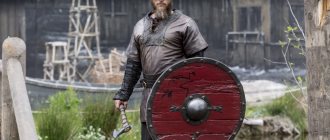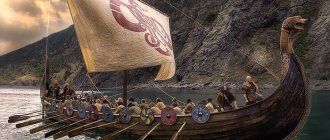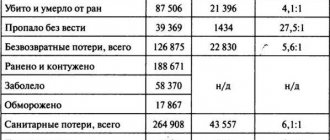“Vikings” season 4: episode 15 released in translation, King Aella brutally kills Ragnar
A new episode of the series “Vikings” season 4 has been released.
Episode 15 can be watched in Russian translation now. The new episode of the series “Vikings” season 4 was released in Russian translation. Watching it will upset many fans of the series. The new episode of the series contains a lot of cruelty and blood, as well as sadness, sadness and a nascent thirst for revenge.
It all begins with Ragnar saying goodbye to his son Ivar the Boneless. Finally, he gives him advice on how to continue living and, most importantly, how to avenge him. Previously, Lodbrok agreed with King Egbert that he would save him from the revenge of his sons. In exchange, he asked to release his son. However, the king himself tells Ivar that his sons should take revenge on Egbert, and not on Ella. Thus, the great Viking decided for the last time to carry out a cunning plan against the hated Saxons.
Ragnar is handed over to King Aelle in a cage. Along the way, the horses are driven by a blind driver. He turns to the prisoner and says that he sees him. This is exactly what was predicted about Ragnar's death: he would die when the blind man saw him. The cart in the forest meets with Ellie's retinue and a long bloody feast begins. Lothbrok's longtime enemy enjoys every minute of his torment. First, his cage is hung high on a tree. The king's guards poke him with spears and burn the floor with torches. Ella himself watches this during the meal and laughs joyfully. The next day, the king himself begins to torture the exhausted Viking. First he hits him. But not in a fair fight. Ragnar is held by guards while he beats him. Ella then tries to extort requests from the Viking for absolution. But loyal to Odin and his other gods, Ragnar is not going to do this.
The Viking's execution is scheduled for the next day. They dig a deep hole for him, and poisonous snakes are thrown into it. Before his death, Ragnar Lothbrok says that he is not afraid of oblivion and joyfully goes to Odin. The frightened King Egberd also came to observe his execution. He disguises himself as an old man and attends the bloody battle incognito.
Meanwhile, a ship with Ivar the Boneless on board arrives in Kattegat. And then Ubba and Siggurd take their brother. Relatives will have a difficult conversation. Ivar tells his brothers that his father has been handed over to King Ella as a prisoner. And also the fact that Ragnar is most likely already dead. And then his brothers tell him their sad news: their mother is dead. In the last episode, Lagertha shot Aslaung in the back when she had already given up and refused to fight. Ivar had the closest relationship with his mother, as she loved her youngest son more than the rest. Therefore, the news of the death of his beloved woman hurts Ivar. He tightly clutches the chess piece that Egbert's grandson gave him before leaving. This causes blood to flow from his palms.
Source
How the real Ragnar Lothbrok died
You've probably watched or at least heard that there is such an entertaining series "Vikings". The main character in it was, until he died, King Ragnar Lothbrok, who died heroically in Northumbria. So in reality (well, as in reality - Ragnar Lothbrok is the hero of the sagas, there is no exact proof that he actually existed. True, his sons are already more real historical characters) he, of course, was not such a fool as to build pretend to be a martyr and go voluntarily into captivity to the Saxons.
He was captured completely by accident. During the next campaign, Ragnar's ships were caught in a storm and were defeated. There were not enough warriors who reached the shore to organize a worthy rebuff. Despite this, the Vikings fought with dignity. Moreover, many of them were without armor. Including Ragnar, who wore only a helmet.
Although the battle was short-lived, the Vikings managed to defeat the Saxons. True, in the end, most of the Vikings were killed, and Ragnar himself was constrained by shields and thus captured, where, of course, nothing good was in store for him. King Ella ordered the king to be subjected to shameful torture, and then he was thrown into a pit with poisonous snakes.
Ragnar’s last words were “How my dear piglets would grunt if they knew what it’s like for me, the old boar!” So he hinted to Ella that he would have a hard time when his sons found out about his death.
And so it happened. The sons of Ragnar gathered a huge army and in 865 the conquest of the island began. King Aella was captured by Ragnar's sons and brutally executed in revenge.
Source
Ragnar's wives.
Before describing the children, I suggest you remember about the king’s wives. Ragnar Lothbrok had three wives in total.
Lagertha - the sagas describe her as the bravest female warrior. She fought in the front ranks, knee-deep in the blood of her enemies, and inspired men who were afraid of a stronger enemy. Having learned that Ragnar would come to woo her, Lagertha tied a wild bear and a watchdog in front of her door. Lagertha made leather pants for him, which were a protective symbol for him. Due to this, Ragnar Lothbrok was nicknamed "Ragnar Leatherpants".
Thora - in order to marry the young daughter of King Herot from the island of Gotland, Ragnar kills two huge poisonous snakes to prove his strength. Thora gives birth to Ragnar two sons - Eirik and Agnar.
Source
Death of Ragnar Lothbrok
Approximately 845. After the death of King Eystein, Aslaug and Ragnar remained in their state. Ragnar took possession of many of the states that his ancestors owned, except for England.
The sons of Ragnar continued to engage in raids, robberies, and conquered lands. Their fame grew and spread.
Ragnar did not take his wife's advice and sailed on these two ships west to England with five hundred people. At parting, Aslaug dressed Ragnar in clothes woven from horsehair.
As Aslaug predicted, the ships crashed off the coast, but Ragnar himself and his people made it ashore. These lands of Northumberland were ruled by a king whose name was Ella.
When he learned that a foreign army had arrived in his country, Ella gathered a huge army and went with him against Ragnar’s army. There a battle took place, great and difficult, all of Ragnar's men were killed, and he was taken prisoner. When Ragnar was asked what his name was, he was silent. Then they threw him into a pit with snakes so that he would confess who he was. The snakes are afraid of the horse smell and did not crawl close. Seeing this, Ella ordered Ragnar's clothes to be torn off, after which the snakes began to bite Ragnar.
Visa (a poetic appeal to the gods, or a description of the action of the runes), which Ragnar said before his death:
I had eight battles, recognized as famous, and I wounded many: fifty and one. I never dreamed that snakes would be my death. Things often happen that you least expect. And he also said: The piglets will grunt, if they find out about the boar’s affairs, there will be plenty of harm for me here: they dig inside with their snouts and push hard, snakes suck me. I'm about to become a corpse and die among the creatures. (excerpt from “The Saga of Ancient Times” © Translation from Old Icelandic: Timofey Ermolaev (Striedmann))
After these words, Ragnar died and Ella realized that in front of him was the famous king Ragnar Lothbrok. Ella is frightened, he decides to send envoys to Ivar and his brothers, convey the news of the death of their father and give the banner of Ragnar, which was sewn and embroidered with a raven on it to his daughter.
(Map showing the approximate burial place of Ragnar Lothbrok)
Ella's envoys appeared before Ragnar's sons and told them what had happened to their father.
865 All of Ragnar's sons, except Ivar, set out to avenge their father. But their army fails and everyone has to retreat and return home. At this time, Ivar comes to Ella and concludes a peace treaty with him, asking for a piece of land for his people that would fit in the skin of an old bull. Unsuspecting Ella gives him everything he asks for. Then Ivar orders to find the largest bull, remove its skin, soak it and stretch it as wide as possible. The skin is then cut into thin threads.
As a result of all these tricks, Ivar received a large plot of land on which a stone city wall was built. The city was named Jorvik.
866 Ivar did not stop there; he calls his brothers to come to the shores of Northumberland again. Having met with them, he talks about his plan to attack Ella.
The revenge plan was so good that everything went well. King Aella was defeated and fell into the hands of the sons of Ragnar.
Remembering how their father Ragnar Lothbrok was tortured, Ivar and his brothers ordered an eagle to be carved on Ella’s back, then cut with a sword along the spine and the insides turned out so that the lungs were on the outside.
Skald Sighvat composed a drape (a song of praise in skaldic poetry):
And King Ivar, the ruler of Jorvik, commanded that Ella’s back be cut along the ridge.
“Here he lost his life, and they considered that they had avenged their father, Ragnar” (excerpt from “The Saga of Ancient Times” © Translation from Old Icelandic: Timofey Ermolaev (Striedmann))
Source
Fans are confident that Ragnar will return in the final episodes of Vikings
Fans believe that one of the posters for the sixth and final season of the Vikings series hints at the return of Ragnar Lothbrok, who will appear before King Ivar for the last time.
The series is currently on hiatus and as fans wait for the finale of Season 6, there are many theories being put forward about how the historical saga will end. One theory is that viewers will once again see Ragnar return to crown Ivar. But how is this possible?
Let's remember that the sixth season shows a fierce battle for the throne of Kattegat, waged by the sons of Ragnar - Ivar the Boneless, who collaborates with the Russian prince Oleg, and Ragnar's eldest son Bjorn Ironside. And it looks like the latter won't make it to the end of the season.
The sons of Ragnar Lothbrok in the Vikings series
This is possible considering that in the fourth season of the last episode of the Vikings series, Ragnar Lothbrok (played by Travis Fimmel) was supposedly killed. Viewers saw how the main character Ragnar was thrown into a pit with poisonous snakes by his enemies.
There is a chance that this is one of the tricks that makes us look forward to the release of season 5 of the historical series “Vikings”. This may be presented as a vision or a dream.
After all, his brother Rollo (Clive Standen) made a surprise appearance in the latest series of Vikings in episode 10, "Moments of Sight."
The creator of the Vikings series, Michael Hirst, has already hinted that Rollo is going on a trip and perhaps he will meet his brother.
In an interview, the writer said: “The viewer must understand why he returned. He returned for a reason that carries over into the first season of the series. There are unresolved issues in his life with his brother and Lagertha that he still wants to resolve."
Fan theory: The poster shows the return of Ragnar
While the writers did their best to make sure the series was historically accurate, they needed creative freedom, so fans can't rely entirely on history to know who will be crowned in the finale. However, some fans believe that the answer lies in that very poster for season six.
It depicts Ivar. If you look closely, you will notice that there are shackles on the hands that place the crown on Ivar's head. And this detail led fans to believe that Ragnar would return one last time to crown his son.
Ragnar met his fate in season four when he was thrown into a pit of snakes. In this scene, he had shackles on his wrists because he was a prisoner of King Aelle. The real return of the great Ragnar Lothbrok seems unlikely - but the Vikings love to use metaphors. So you shouldn’t completely rule out the character’s appearance.
Source
Ragnar Lothbrok - a mythical Scandinavian hero or a real person
In the history of the Scandinavian countries there is a semi-mythical character Ragnar Lothbrok - a talented navigator, conqueror, and the threat of medieval Christian civilization. The Vikings did not keep chronicles and information about the historical characters of those years reaches us only as ancient sagas.
The biography of the formidable ruler is contradictory and there is no absolutely correct information in it. The exact years of life of the famous hero are also unknown (approximately the beginning of the 9th century). His height was, again, approximately 180 cm. According to the fashion of that time, he wore a beard and long hair. Lived in the small town of Kattegat. Ragnar Lothbrok himself became famous as the tough ruler of Denmark and Sweden, the conqueror of Western lands and adventurer...
A short biography of the life of Ragnar Lothbrok and his children.
According to legend, Ragnar Lothbrok was one of the Ynglings - the rulers of Sweden and Norway. Today there is no reliable information that he really existed, but various epics and myths tell that the Danish king is not a fictional character.
Ragnar Lothbrok played an important role in the history of Denmark, being an excellent military leader and commander, he won the Battle of Bravellir in East Gautland. Many epics and songs were told about the bloodiest battle, thanks to which the story of the exploit of Ragnar Lothbrok has survived to this day.
The King of Denmark, Sigurd the Ring, was the father of Ragnar Lothbrok and was also part of the Yngling family, he ruled for a very long time, until his death.
By 845, Ragnar Lothbrok becomes an influential jarl of his time. He was always at the epicenter of battles and battles because he wanted glory, he wanted to be a hero. According to legend, Ragnar was afraid that his children would become more famous than him. In the Scandinavian countries, he is hailed as a real legend, a robber, adventurer and simply an adventurer.
Ragnar Lothbrok believed in paganism and saw himself as a direct follower of the god Odin.
What does the nickname Lodbrok mean?
Ragnar reportedly received his famous nickname Lodbrok either as a child or from his first wife. The fact is that lederen broek translates as leather pants. According to the first version, in his youth he accidentally fell into a deep hole full of snakes and only leather pants saved him from death, according to another, his wife sewed leather pants for him as an amulet, which he never parted with.
It is noted in history that both pants had fur inside, thanks to which, in the first case, the snakes could not reach Ragnar’s legs with their teeth, in the second it saved him from injury in battles by softening the blows.
Experts in the field of linguistics put forward several versions of the origin of the legendary surname.
Some argue that Ragnar’s name was given by the English river Lodbrik (“stream of hatred”), others are of the opinion that the inhabitants of Iceland named the king that way and it means “frightening people.”
As an option, scientists are also considering the theory that Lodbrok is a derivative of two words - fate and banner and is literally translated as Fate.
According to contemporaries, the Viking fought under a flag with the image of Odin the raven.
Wives and children
According to information that has reached us, Ragnar Lothbrok was officially married three times. According to established traditions, Vikings increased their fortunes and raised their social status through marriage. Having defeated a wild wolf and a ferocious bear, young Lodbrok had the opportunity to fight with the warrior Lagertha and subsequently marry her. But this marriage did not last long.
Lagertha gave birth to a son and two daughters, and Ragnar, wanting to climb the social ladder and become a jarl, divorced her and married the daughter of Jarl Harred, Thora.
Jarl in Scandinavia was originally the name of the ruler of a separate tribe, and later the ruler of the entire people.
In this marriage, Jarl Ragnar and Princess Aslaug had five sons, who left a noticeable mark not only in the history of Scandinavia, but also in the memory of the peoples they conquered. Their names were Bjorn Ironside, Sigurd Snake-Eyes, Ivar the Boneless, Hvitserk and Ragnhild. They extended the family tree and continued the work of their father.
Bjorn was called Ironside due to the fact that in numerous battles and duels he managed to avoid serious injuries. He is known as a successful conqueror of the Mediterranean and North African lands. Sigurd received his nickname due to either a mutation in the pupil - a snake was supposedly visible in it, or because of his piercing gaze. His grandson managed to take the throne of Norway.
Another colorful figure in the Lodbrok family is Ivar the Boneless. Researchers also differ in their opinions about the origin of his nickname. Some believe that he suffered from a bone disease and could not walk on his own legs. Others believe that he was named Boneless due to the extraordinary agility of this warrior. He and Sigurd were distinguished by their extraordinary cruelty and harsh character.
In addition to the mentioned eleven descendants from official marriages, the legendary Ragnar had many more illegitimate children both in Scandinavia and in the lands he conquered, the names of which history is silent about.
There is even a saga that a brave warrior could dress in women's clothing for a date with his next mistress.
Although, according to their pagan traditions, wearing a woman’s dress meant covering yourself with indelible shame. Most likely, it was meant that this hero-lover was ready to do anything to win over another woman.
Paris Campaign
Ragnar's greatest fame came from his campaign in Frankia - modern France. He was able to defeat the strongest European army and capture the capital, Paris. Lordbrock was an infinitely ambitious and proud man, so he could not bear the thought that someone after him, including his sons, would become a more famous and titled conqueror.
In 845, 150 longships - Viking ships and 5,000 warriors, armed only with swords and shields, set off with Ragnar and his comrade Hasting on another campaign of conquest. At that time he was already a renowned commander with unquestioned authority. His willpower and cruelty helped to restrain and direct a huge motley army in this campaign.
Upon arrival in France, he divided his army, or more simply, a formidable band of northerners, into two parts. Some went along the Seine to Paris, while others along the Loire. This was done in order to plunder as many towns and cities as possible before their population fled at the sight of the horde with unusual haircuts.
They united in front of Paris and went on the offensive. Charles the Bald, who ruled France at that time, tried to resist the Vikings, but suffered a crushing defeat. He placed his soldiers on both banks of the Seine, intending to attack the pagans from both sides at the same time. But his calculation turned out to be wrong - the ferocious Vikings defeated half of the French on one bank, and their comrades from the other bank could not help them.
All French prisoners were tortured and brutally executed.
One hundred and eleven soldiers from Charles's army were hanged on a small island in the Seine, the rest were hacked to pieces with axes. The shocked Europeans fled in fear and took refuge in the city. But on March 28, Paris fell and the army of Ragnar Lothbrok entered the city streets.
The king was forced to pay an unprecedented ransom of seven thousand francs so that the wild army would not defeat and plunder the city. Ragnar did not touch Paris and its inhabitants, but soon returned and completely destroyed all its suburbs and nearby villages.
Historians claim that in this campaign there was luck on the side of the pagan warriors. The best warriors of the European continent, trained and well armed, were defeated by semi-savage fighters due to the fact that their main forces were weakened in the endless internecine wars between the three claimants to the French throne. In addition to a happy accident, Ragnar had excellent military talent and a developed network of spies on his side.
During the next campaign against France, the Vikings were overtaken by an epidemic of dysentery and many of them died without ever engaging in battle with the enemy. This time they limited themselves to looting churches, monasteries and small settlements.
The Europeans called Ragnar Lothbrok “the Scourge of God” because, using his innate cunning, he waited for a Sunday or a church holiday and, when all the knights gathered in churches for festive celebrations, suddenly attacked the defenseless city.
As a rule, the Vikings ravaged cities to the ground and killed all the inhabitants, but Ragnar acted differently. If he received the agreed ransom from the frightened residents, then they themselves and their homes remained untouched. And it was not a matter of the kindness or mercy of the conqueror - he expected to return to these lands again after some time and again receive a substantial reward.
Sinister Oleg
The introduction of a new dangerous enemy from the east into the series was supposed to liven up the plot, and also - well, suddenly! — to attract the attention of the Russian-speaking audience. What viewer can resist such courtship? Not only did they decide to introduce Kievan Rus into the already popular series in Russia, but the showrunners also invited the main Russian Viking, Danila Kozlovsky, to play the role of Prophetic Oleg. The first half of the sixth season is dedicated to the adventures of Ivar the Boneless, who fled to Rus', whom the Russian prince plans to place as a puppet king on the throne in Scandinavia. This storyline is not only about the Russians storming the Viking cities - a lot of time is also devoted to palace intrigues in Rus' itself, where Prince Oleg weaves a web of conspiracy in the struggle for absolute power with his brothers Askold and Dir (Blake Kubena and Lenn Kudryavitsky).
Who are Prophetic Oleg, Askold and Dir?
According to the main Russian chronicle about the origins of Rus', the Tale of Bygone Years, created by Nestor the Chronicler, Oleg, who was a relative of Rurik, succeeded him on the throne in Novgorod in 879, pledging to become something of a regent for Rurik’s young son Igor. In 882, Oleg captured Kyiv by cunning, which at that time was ruled by two Viking brothers - Askold and Dir. Both were killed, and Kyiv was proclaimed by Oleg “the mother of Russian cities.” Then Oleg continued to expand his subject territory: he went against the Drevlyans, Northerners, Radimichi, and ravaged the outskirts of Constantinople (Constantinople) - however, Byzantine sources do not mention this campaign. For his successful military campaigns (and due to the fact that he avoided poisoning), Oleg was popularly nicknamed the Prophetic. The legend of his death is described, in particular, in Pushkin’s poem “The Song of the Prophetic Oleg”: the Magi predicted to the prince that he would “accept death from his horse.” Oleg decided to avoid fate by refusing to mount his favorite horse. When the horse died, the prince decided to look at its bones, and, stepping on the animal’s skull, was bitten by a poisonous snake that crawled out of it. After his death, Rurik’s son Igor began to rule Kievan Rus.
Frame: TV series “Vikings”
It is impossible not to mention the series’ obvious homages to Russian culture: from the scene almost frame-by-frame reconstructed from “Viking” with riders jumping out of snow-covered fir trees to the flight of characters over the city (I really want to believe that the Russian “Viking” was not the only source of inspiration for the creators of the series and that they watched, for example, “Andrei Rublev”). At the same time, the way Kiev and its inhabitants are depicted in “Vikings” may raise very obvious questions among Russian-speaking viewers: not only was Rus' already baptized under Oleg, and the prince’s squad for some reason resembles Mongol-Tatar riders, but also Kiev is bitterly winter most of the time, even as spring begins in the northern Kattegat in a parallel storyline, suggesting that the mother of Russian cities is somewhere in the Arctic. And Prince Oleg’s decision to conquer Scandinavia is simply absurd: the meager lands of the Vikings would hardly have interested the Rus, who, on the contrary, left these inhospitable places for more fertile lands.
After all of the above, it is easy to accuse the show of creating “cranberries”, brand the showrunners as Russophobes, and even call this phantasmagoria a shining example of soft power and Western propaganda
But the truth is that the Vikings resorted to exactly the same insinuations and discrepancies with sources throughout all previous seasons: just remember the soldiers from England dressed in burgignots from the Renaissance, and even the Vikings themselves, fighting without helmets at all (and even and with hairstyles and tattoos to match 21st century metalheads; Hearst's Vikings must have been the most stylish people of their time).
Searching for such inconsistencies is, of course, a fascinating activity, but pointless, since we are talking about a game series, and it will hardly be a discovery for anyone that if it airs on a channel called History, then this does not guarantee any historical accuracy at all. The vengeful, cruel and paranoid Oleg, the main antagonist of the finale, was needed by Hearst to rehabilitate Ivar the Boneless, who had become too evil in the fifth season, and his campaign against Scandinavia was needed for the sake of the heroic death of key characters in battle. They seem to be trying to present Oleg’s personality as ambiguous, putting pressure on his religiosity (in his fantasies, the character imagines himself as Christ being crucified on the cross - this unexpected scene is as pathetic as it is funny), but all the adventures of the “Vikings” in Kievan Rus are necessary only for in order to put an end to a number of protracted storylines that had not previously caused much emotional response.
Hog with his piglets
In 865, Ragnar decided to visit Britain, but on the way his fleet was caught in a strong storm and the earl's army was significantly weakened. Having attacked one of the British islands - Northumbria, the Vikings received a decisive rebuff. The pagans were defeated, and the invincible Ragnar Lothbrok himself was captured. This time the brave hero suffered a setback - his fleet ran aground and the Vikings were unable not only to advance, but even to defend themselves.
In a mysterious twist of fate, King Aella decided to execute Ragnar by throwing him into a pit of snakes! And this time, leather pants did not save the brave Viking - he died from a poisonous snake bite in the face. The last words of the legendary hero of the Scandinavian sagas were: “The piglets will grunt when they find out how the old boar died.”
As might be expected, Ragnar's descendants became angry when they learned of their father's murder and vowed to avenge him. Particularly infuriating was the fact that if their father died such a death, he would not go to Valhalla - a paradise for the Vikings. The most ferocious of his sons - Bjorn and Sigurd - gathered several thousand warriors and went on a campaign against Northumbria. As a result, the British troops were defeated, and King Ella II was brutally executed and died in agony.
The brothers destroyed and plundered a huge part of Britain, and not everyone agrees that this was done in the name of revenge. Perhaps, under such a noble pretext, the sons of Ragnar simply plundered a huge number of people in Britain for four years.
The place where he is buried is not known for certain. To this day, March 28th is HIS day and the saga of HIS exploits is read. He became an undying hero of Scandinavian legends and myths. Residents of Scandinavia pay tribute to their ancestors and remind the whole world of their legendary heroes.
The image of Ragnar Lothbrok and his companions is reflected in many modern computer games, and TV series are being filmed about the exploits of ancient heroes. The Vikings series, which presents the main milestones in the life of the legendary hero Ragnar Lothbrok, has gained enormous popularity around the world. His role in the film was played by actor Travis Femmel. Thanks to his brilliant performance, we were presented with the image of a living and invincible Ragnar.
Is Ragnar alive in season 5?
Is Ragnar alive in season 5? Unfortunately for Vikings fans, Ragnar Lothbrok actually died in the second part of Vikings season four. Ragnar was definitely left for dead at the end of season four, but made a surprise return in one of Bjorn's visions
in the fifth season.
Also, is Ragnar still alive in Season 6?
He was executed
at the hands of King Aella (Ivan Blakely Kaye), who threw him into a pile of snakes. He later died from the poisonous bites.
Accordingly, how did Ragnar die in real life?
According to medieval sources, Ragnar Lothbrok was a 9th-century Danish king and Viking warrior famous for his exploits and death. in the snake pit by hand
Aella of Northumbria and for being the father of Halfdan, Ivar the Boneless and Hubba, who led the invasion of East Anglia in 865.
similarly Why did Ragnar leave the show?
Although Ragnar Lothbrok was supposed to die in the very first season, the popularity of the series sustained him. Instead of dying at the hands of El in the first season, Ragnar died in the fourth season
. Beyond the fact that it was necessary, Travis was ready to leave; he didn't think the series would last this long.
Who will Lagertha end up with?
Lagertha makes a life for herself away from Kattegat. Fast forward to Season 3 Episode 2, four years later, and she's married. Earl Sigward
(Morten Suurballe), Count of Hedeby.
Content
How many wives did Ragnar have?
According to legend, Ragnar - the son of King Sigurd Hring - had three wives
, the third of whom was Aslaug, who bore him such sons as Ivar the Boneless, Bjorn Ironside, and Sigurd Snake-in-the-Eye, all three of whom would grow in stature and fame than he.
Who is the most famous Viking who ever lived?
10 most famous Vikings
- Eric the Red. Eric the Red, also known as Eric the Great, is a figure who epitomizes the bloodthirsty reputation of the Vikings more fully than most. ...
- Leif Erikson. ...
- Freydis Eiriksdottir. ...
- Ragnar Lothbrok. ...
- Bjorn Ironside. ...
- Gunnar Hamundarson. ...
- Ivar the Boneless. ...
- Eric Bloody Axe.
How old was Ragnar when he died in real life?
The "real" Ragnar could have died sometime between 852 and 856, which would make him 89-93 years old
, which seems impossible.
Are Travis Fimmel's eyes real?
The simple (and unfortunately not so poetic answer) is that the eyes are digitally enhanced. Travis and Alex have naturally blue eyes
. In some scenes they digitally saturated the eyes to make it more visible as it was lost in the color grading process.
What happened to Ragnar's son with Snake Eyes?
In a rage, Ivar threw his ax at Sigurd, and it hit him in the stomach.
. Sigurd snatches it away, gets up and marches towards Ivar, intending to kill him with the same axe. he dies a few steps away.
How much money did Travis Fimmel make from the Vikings?
Amid his departure from the series, the actor is rumored to be earning $400,000 (£294,000) per episode
, reports hitberry.com. Although this figure likely increased during his tenure on the series as the show's popularity grew.
Who was Ragnar's first wife?
Lagertha
first wife of Ragnar Lothbrok. She is a count, a strong shield maiden and a force to be reckoned with.
Did Lagertha sleep with Aslaug and Ragnar?
But this was far from the case. On the contrary, she did something similar. It turned out that Lagertha slept with Rollo
, the novel that gave birth to Bjorn. Ragnar blindly thought that Bjorn was his son, but in reality he was Rollo's son.
Who killed Aslaug?
Aslaug is killed in Vikings Season 4 at the hands of Lagertha
, who had long wanted to take her home.
Who was Ragnar's real wife?
According to legend, Lagertha
was a Viking shield maiden and ruler from what is now Norway, and the ex-wife of the famous Viking Ragnar Lothbrok. Her story was recorded by the chronicler Saxo in the 12th century.
Who is Ragnar's favorite wife?
For fans of the TV show Vikings, Lagertha
probably Ragnar's favorite wife. She is an independent shield maiden who rose to fame alongside Ragnar when they became rulers of Kattegat.
Who was the most famous female Viking?
We may have saved the best for last, given the fact that Freydis Eiriksdottir
was included in numerous historical sources and is therefore considered the most famous female Viking warrior.
Was Magnus really Ragnar's son?
The Queen is adamant that Magnus is Ragnar's son
and that Ragnar would protect Mercia for the benefit of their son. She promises that if Wessex attacks, they will have to face the full force of the Viking army. Despite the queen's claims, there is no evidence that Magnus is Ragnar's son.
What disease does Ragnar have?
1 answer. He suffered from kidney failure
. Kidney failure can lead to severe abdominal discomfort, blood in the urine, and a buildup of waste that can cause illness, hallucinations, and nausea.
What does Ragnar mean in English?
In English Baby Names the meaning of the name Ragnar is: Strong Advisor
. An ancient personal name.
Why do Ragnar's eyes glow blue?
Ragnar's eyes are blue because he fights for justice and filial power.
. His brothers, Rolo, are dark because he is a traitor and only fights for himself.
What nationality is Travis Fimmel?
Australian people of German descent
.
Why do Ragnar's eyes change color?
It makes sense to me that Ragnar's eyes are colored to directly reflect his spirit at the time
. When he was young, ambitious, the most "Viking", his eyes were bright blue and healthy. As age, fatigue and doubt crept into his psyche, they became gray and less vibrant, more lifeless.
Last updated: 26 days ago - Authors: 17 - Authors: 24 - Links: 20 interviews and posts; 12 Video.
Find out everything about your loved one. celebrities in Celebrity Interviews and don't forget to share this post!
